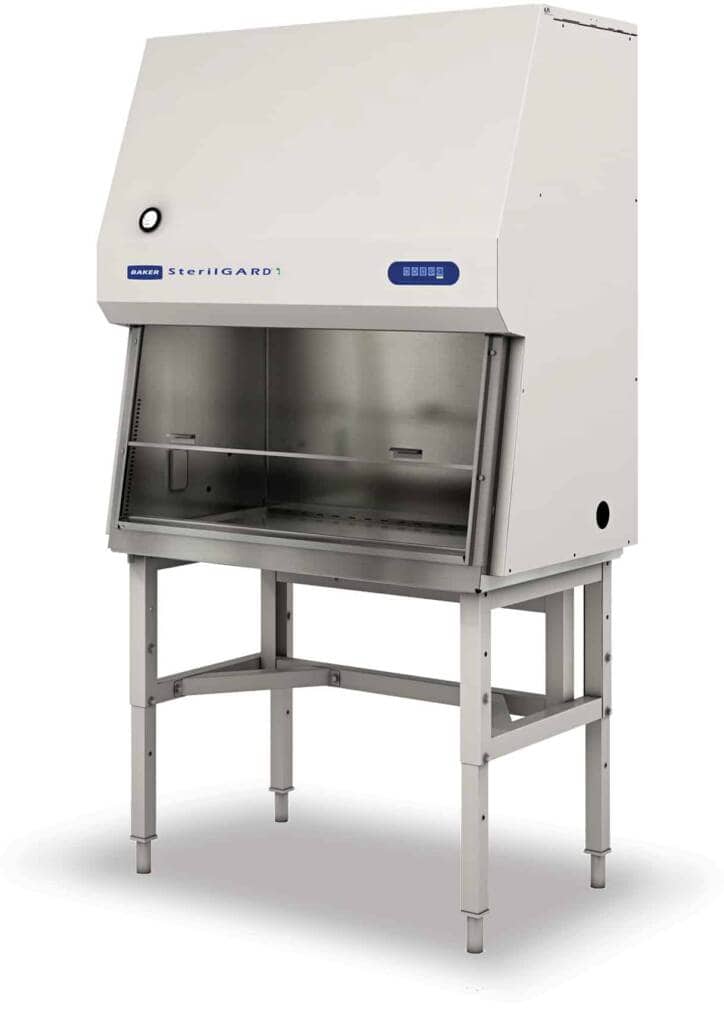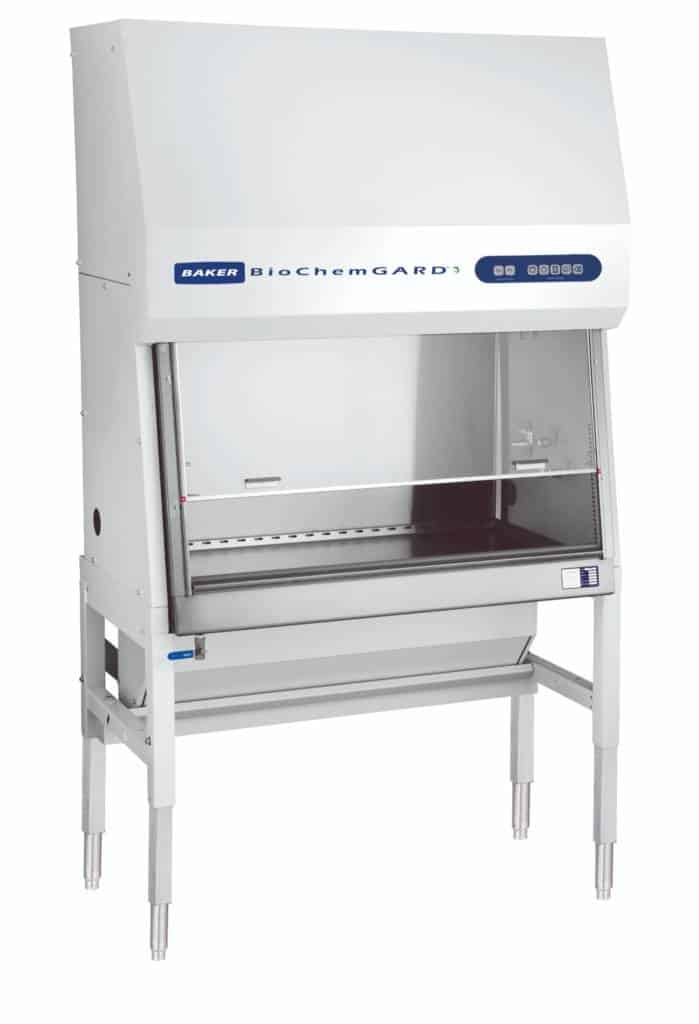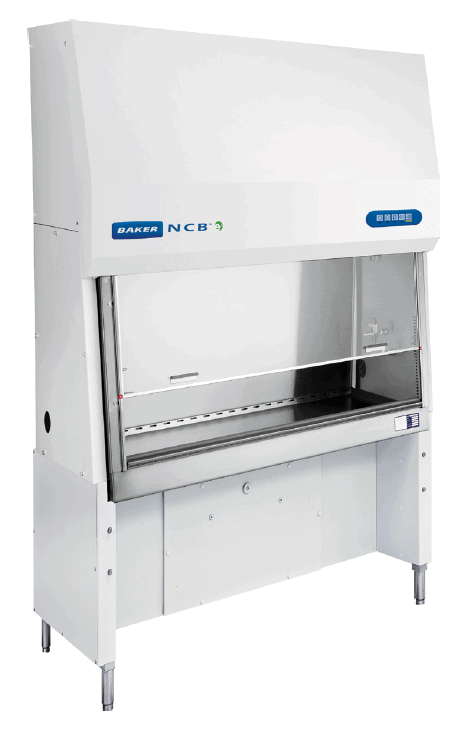
Biological Safety Cabinets [Class I, II & III]
The Baker Company’s biological safety cabinets are designed to far exceed NSF-49 requirements. Through innovation, Baker hoods provide personnel, product and environmental protection while also saving energy and providing an ergonomic working environment. Baker hoods have earned a reputation for being the longest lasting with the lowest life cycle cost, and will offer many years of trouble-free operation.
-
 SterilGARD e3 Class II Type A2 Biological Safety CabinetsThe SterilGARD e3 Type A2 hood is 70% recirculated and 30% exhausted. It is designed to be vented either into the room o …View Products
SterilGARD e3 Class II Type A2 Biological Safety CabinetsThe SterilGARD e3 Type A2 hood is 70% recirculated and 30% exhausted. It is designed to be vented either into the room o …View Products -
 BioChemGard e3 Class II Type B2 Biological Safety CabinetsThe BioChemGard e3 Type B2 hood is 100% exhausted to the outside. It is designed for applications that include using che …View Products
BioChemGard e3 Class II Type B2 Biological Safety CabinetsThe BioChemGard e3 Type B2 hood is 100% exhausted to the outside. It is designed for applications that include using che …View Products -
 NCB e3 Class II Type B1 Biological Safety CabinetsThe NCB e3 Type B1 hood is 60% exhausted to the outside and 40% recirculated. The unique design enhances containment and …View Products
NCB e3 Class II Type B1 Biological Safety CabinetsThe NCB e3 Type B1 hood is 60% exhausted to the outside and 40% recirculated. The unique design enhances containment and …View Products
A variety of biosafety cabinets that provide the highest level of performance
A biological safety cabinet, also known as a biosafety cabinet, is an important piece of safety equipment in any lab that will protect you, others, and your space from infectious droplets and aerosols. The Centers for Disease Control and Prevention (CDC) defines biological safety cabinets (BSCs) as “the primary means of containment developed for working safely with infectious microorganisms.”
The most common cabinets are Class II BSCs, which provide protection for you and those in your lab, samples and products, and the environment. Class I provides protection for you and the environment, but not your samples. Class III provides the most protection since the enclosure is gas-tight.
We offer a variety of Class II and III biosafety cabinets that provide the highest level of performance, user convenience and comfort, and energy efficiency. Some models can save you up to 70% annually in operating costs due to a large reduction in energy consumption and heat yields. Additionally, our models are equipped to handle a variety of biosafety levels (BSLs). They also meet and exceed NSF 49.
| The SterilGARD e3 is designed for many applications involving agents of low and moderate risk, including sterile product preparation and biological experimentation. | BSL-1, BSL-2, BSL-3 |
| The NCB is intended for lab procedures, including microbiological studies, cell culture, pharmaceutical procedures and toxicology. | BSL-1, BSL-2, BSL-3 |
| BioChemGARD e3 series is designed for labs that need containment and removal of vapors, mists and particulates. | BSL-2 and BSL-3 |
Biological Safety Cabinet Considerations
There are many important factors to consider when purchasing a biological safety cabinet, including:
- Sizes: Our biosafety cabinets come in a range of sizes designed to suit your lab space needs. Hood widths are 3’, 4’, 5’, and 6’.
- Monitoring and alerts: All units have an audible alarm and a flashing LED to indicate when the sliding viewscreen is in an unsafe position. They also come with a mute switch, which allows the operator to mute the alarm tone for brief adjustments. Some have the capability of indicating a power loss at the panel and visual and audible alarms. A few biological safety cabinets feature an audible/visual airflow alarm and automatic shutoff system called the Airflow Monitor (AFM), which warns when the exhaust airflow decreases.
- HEPA filtration: All BSCs come with a supply and exhaust filter. The Class II B1 is unique in that it has two supply filters. What differentiates the Class II BSC is the percentage of air that recirculates through the supply filter and what percentage of air goes through the exhaust filter. The Class III models feature full-coverage, ceiling-mounted supply HEPA filters to ensure an ISO Class 4 operating environment. Your sales specialist can help determine what BSC is right for your application.
- Ergonomics: Many of our models feature exclusive National Science Foundation-approved cable ports, which allow a safe and ergonomic way of introducing cables and siphoning tubes into the cabinet without interfering with the containment. The Class III models offer an adaptive ergonomic design, including a 10° slanted viewscreen and stainless steel gloveports built directly into the viewscreen. The viewscreen, which is scratch resistant and protects against most decontamination agents, provides maximum safety and reduces eye strain.
- Energy efficiency: Our models feature a ReadySAFE mode, which uses 50-75% less energy during off hours.
- Durability and reliability: The Class II models include a StediFLOWTM VFD motor controller, which improves performance, extends the filter life and reduces operating costs and downtime by regulating airflow more efficiently. The Class III models are built to the highest leak-tightness specifications, and each IsoGARD model undergoes a Class III helium leak test prior to shipping.
- Biological safety cabinet classes: Your choice of cabinet depends on what level of protection you need for laboratory workers, the space, and the samples. Class II BSCs protect you, people in your lab, samples and products and the environment. Class I provides protection for you and the environment, but not your samples. Class III provides the most protection since the enclosure is gas-tight. The Class III models include the same state-of-the-art features as the Class II cabinets, in addition to a primary physical barrier that offers protection between the lab investigator and the biological agent.





